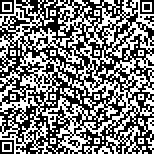| Quote
: |
罗艺徽,吴姗姗,王振常,吕艳杭.壮方壮肝逐瘀煎联合骨髓间充质干细胞移植对CCl4大鼠肝纤维化的影响[J].湖南中医药大学学报英文版,2023,43(3):443-449.[Click to copy
] |
|
| |
|
|
| This paper
:Browser 1463times Download 938times |
| 壮方壮肝逐瘀煎联合骨髓间充质干细胞移植对CCl4大鼠肝纤维化的影响 |
| 罗艺徽,吴姗姗,王振常,吕艳杭 |
| (广西国际壮医医院, 广西 南宁 530201) |
| 摘要: |
| 目的 探讨壮肝逐瘀煎联合骨髓间充质干细胞(bone marrow mensenchymal stem cell, BMMSC)移植对CCl4诱导的肝纤维化大鼠的影响。方法 取20只大鼠为正常对照组(A组),另取80只造模成功后的大鼠,随机分为模型组(B组)、单纯壮肝逐瘀煎组(C组)、单纯BMMSC组(D组)、壮肝逐瘀煎联合BMMSC组(E组),每组20只。A组、B组、D组灌服生理盐水(0.1 mL/kg,1次/d),C组、E组灌服壮肝逐瘀煎(0.1 mL/kg,1次/d),各组均连续干预12周。其中,第4周末,B组、C组尾静脉注射生理盐水,D组、E组尾静脉注射BMMSC。干预后,采用HE染色观察各组大鼠肝脏病理变化;采用全自动生化仪检测肝功能指标[谷草转氨酶(aspartate aminotransaminase, AST)、谷丙转氨酶(alanine aminotransferase, ALT)、总胆红素(total bilirubin, TBIL)、白蛋白(albumin, ALB)]变化;采用RT-PCR检测肝组织甲胎蛋白(alpha fetoprotein, AFP)、ALB、细胞角蛋白18(cytokeratin 18, CK18)mRNA;采用Western blot检测表皮生长因子(epidermal growth factor, EGF)、肝细胞生长因子(hepatocyte growth factor, HGF)的表达;冷冻切片技术检测携带绿色荧光蛋白的BMMSC向肝脏归巢的情况。结果 B组肝小叶结构被广泛增生的纤维化组织分割并包绕成大小不等的圆形或类圆形的肝细胞团(即假小叶),肝细胞排列絮乱、坏死、变性及再生。C组、D组、E组肝小叶结构得到不同程度的恢复,肝细胞变性、水肿得到不同程度的改善。与A组比较,B组AST、ALT、TBIL明显升高(P<0.05),ALB和AFP、ALB、CK18 mRNA及HGF、EGF蛋白表达明显降低(P<0.05)。与B组比较,C组、D组、E组AST、ALT、TBIL明显降低(P<0.05),ALB和AFP、ALB、CK18 mRNA及HGF、EGF蛋白表达明显升高(P<0.05)。与E组比较,C组、D组AST、ALT、TBIL明显升高(P<0.05),ALB和AFP、ALB、CK18 mRNA及HGF、EGF蛋白表达明显降低(P<0.05)。免疫荧光结果显示,E组肝脏内携带绿色荧光蛋白数量明显高于A组、D组。结论 壮肝逐瘀煎联合BMMSC治疗可抗肝纤维化,可有效促进BMMSC向肝脏归巢,修复受损的肝组织。 |
| 关键词: 壮肝逐瘀煎 骨髓间充质干细胞移植 联合治疗 归巢 CCl4 肝纤维化 |
| DOI:10.3969/j.issn.1674-070X.2023.03.012 |
| Received:September 27, 2022 |
| 基金项目:国家自然科学基金地区科学基金项目(81960910,81660745,81360598)。 |
|
| Effects of Zhuangfang Zhuanggan Zhuyu Decoction combined with bone marrow mesenchymal stem cell transplantation on rats with CCl4-induced liver fibrosis |
| LUO Yihui,WU Shanshan,WANG Zhenchang,LV Yanhang |
| (Guangxi International Zhuang Medicine Hospital, Nanning, Guangxi 530201, China) |
| Abstract: |
| Objective To investigate the effects of Zhuanggan Zhuyu Decoction (ZGZYD) combined with bone marrow mesenchymal stem cell (BMMSC) transplantation on rats with CCl4-induced liver fibrosis. Methods A total of 20 rats was taken as normal control group (group A). Another 80 model rats were randomly divided into model group (group B), ZGZYD group (group C), BMMSC group (group D), ZGZYD+BMMSC group (group E), with 20 rats in each group. Group A, B and D were administrated with physiology brine (0.1 mL/kg, once a day), while group C and E were administrated with ZGZYD (0.1 mL/kg, once a day). All groups were treated for 12 weeks. At the end of the 4th week, group B and C were injected with normal saline into caudal vein, meanwhile, group D and E were injected with BMMSC into caudal vein. After the intervention, the pathological changes of liver in each group were observed by HE staining; automatic biochemical instrument was used to detect the changes of liver function indexes [aspartate aminotransaminase (AST), alanine aminotransferase (ALT), total bilirubin (TBIL), albumin (ALB)]; RT-PCR was used to detect alpha fetoproteinb (AFP), ALB, and cytokeratin 18 (CK18) mRNA in liver tissue; the expression of epidermal growth factor (EGF) and hepatocyte growth factor (HGF) was detected by Western blot and the homing of BMSC with green fluorescent protein to liver tissue was detected by frozen section. Results The normal liver lobules in group B were segmented and surrounded by extensively proliferative fibrosis tissue into circular or quasi-circular hepatocyte masses of different sizes (false lobe), with disorganized hepatocytes and hepatocyte necrosis, degeneration and regeneration. While in group C, D and E, the liver lobular structure was recovered to different extent, and hepatocyte degeneration and edema were improved to varying degrees. Compared with group A, the AST, ALT and TBIL in group B were significantly higher (P<0.05), while ALB and AFP, ALB and CK18 mRNA, as well as protein expression of EGF and HCG were significantly lower (P<0.05). Compared with group B, the AST, ALT and TBIL in group C, D and E were significantly lower (P<0.05), but the ALB, and AFP, ALB, CK18 mRNA as well as protein expression of EGF and HCG were significantly higher (P<0.05). Compared with group E, the AST, ALT, and TBIL in group C and D were significantly higher (P<0.05), but the ALB, AFP, ALB, CK18 mRNA, protein expression of EGF and HCG were significantly lower (P<0.05). The results of immunofluorescence showed that the number of green fluorescent protein in the liver of group E was significantly higher than that of group A and D. Conclusion ZGZYD combined with BMMSC treatment can resist liver fibrosis, effectively promote BMMSC homing to the liver, and repair the damaged liver tissue. |
| Key words: Zhuanggan Zhuyu Decoction bone marrow mesenchymal stem cell transplantation combination therapy homing CCl4 liver fibrosis |
|

二维码(扫一下试试看!) |
|
|
|
|


